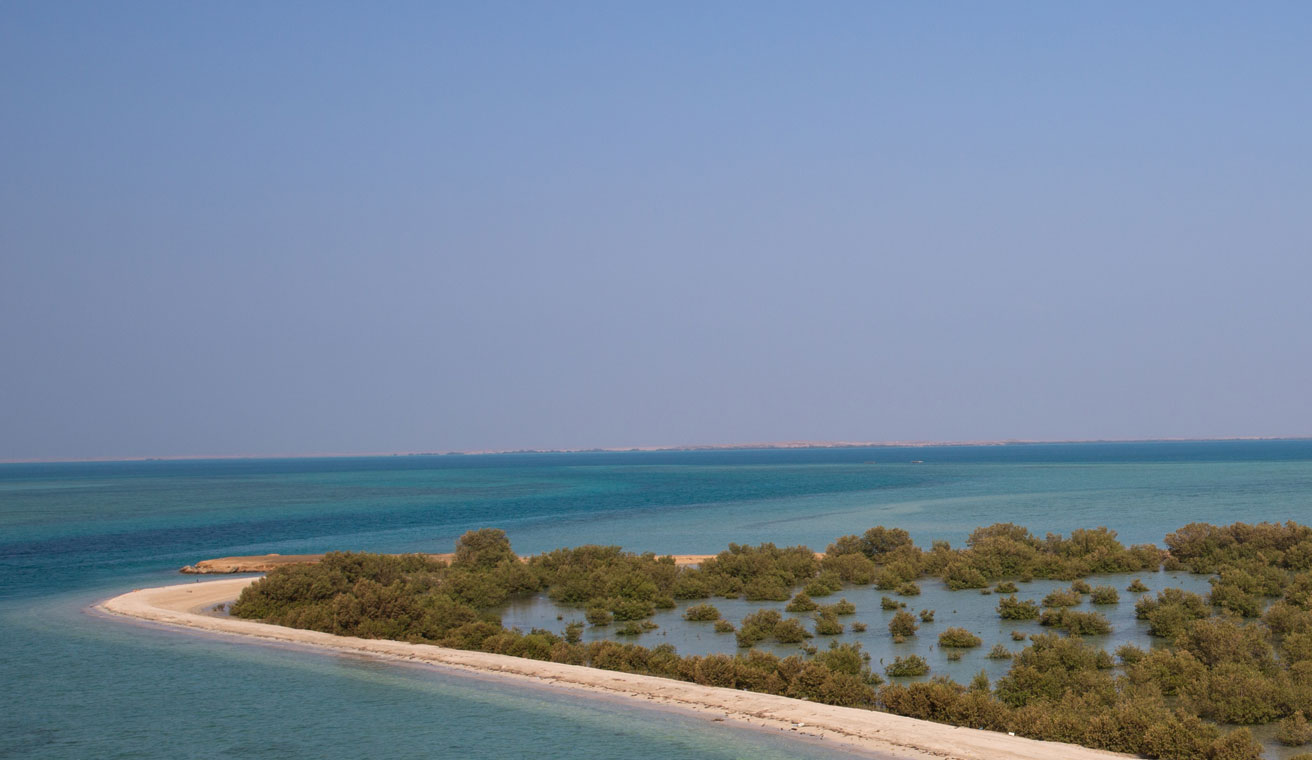
Abu Ali Island nature reserve
A biodiverse gem in the Arabian Gulf.
Abu Ali Island, located on Saudi Arabia’s eastern coast, north of the industrial city of Jubail, stands out as an environmental gem. Designated as a reserve, under Aramco’s supervision, in 2014, the island is one of the largest in the Arabian Gulf.
Environmental stewardship
Abu Ali Island exemplifies the significance of environmental stewardship, serving as a living model for protecting the natural habitats of plant and animal species, particularly endangered native species.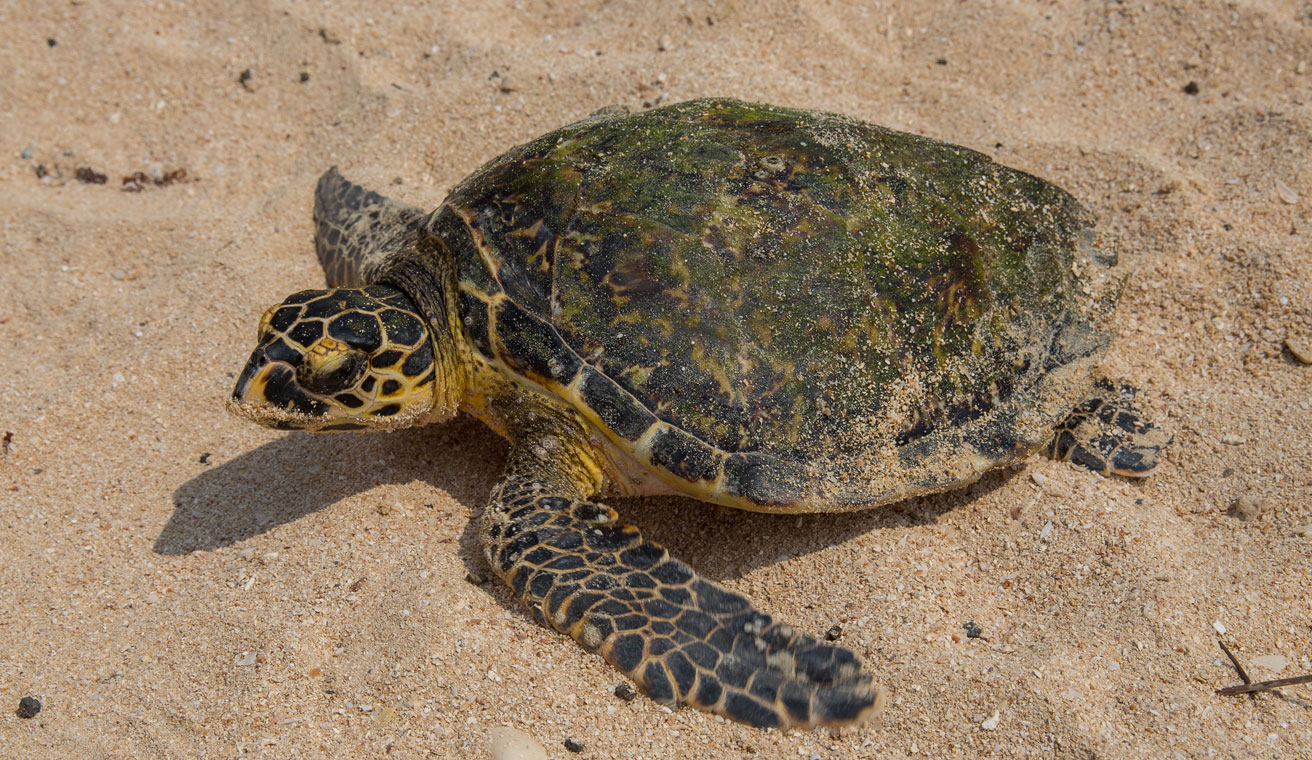
A female hawksbill turtle on Abu Ali Island.
Abu Ali Island stands out for its serene beaches and coastal vegetation, making it an environmentally significant site in the Arabian Gulf. This environment supports marine life, such as sea turtles, as well as Green turtles and hawksbill turtles, two species classified as endangered by the International Union for Conservation of Nature (IUCN), underscoring the island’s ecological value.
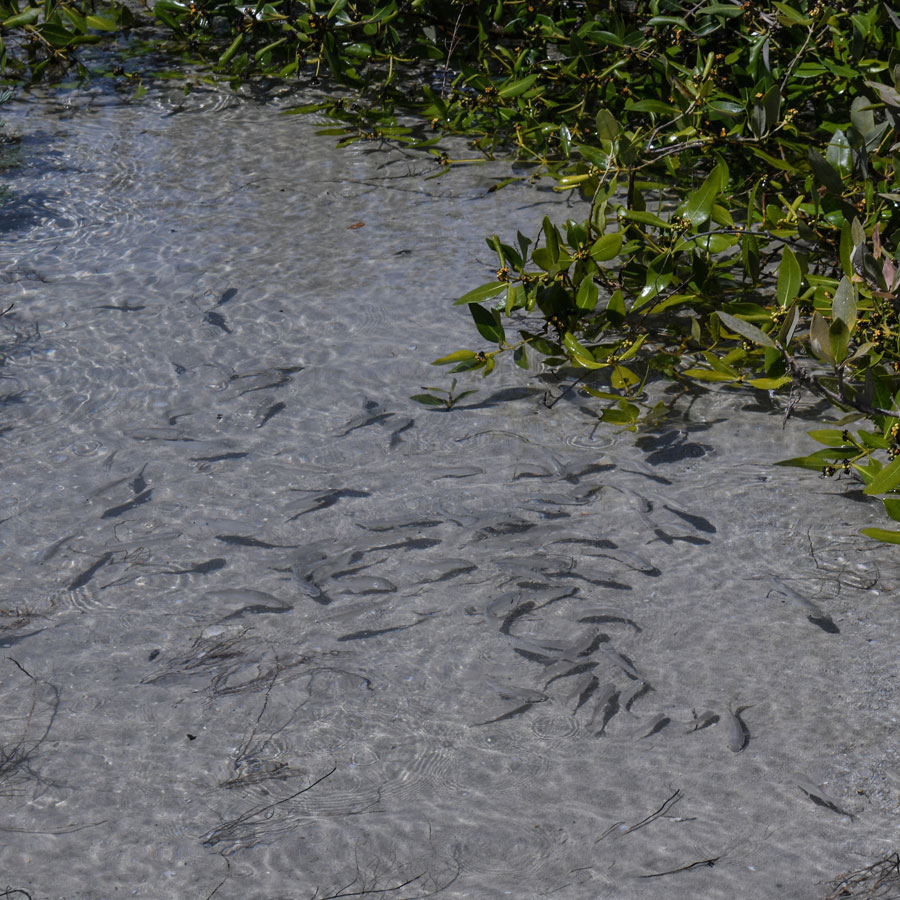
A fish nursery in the safety of a mangrove forest.
Ecological value
Abu Ali boasts remarkable geographical and ecological diversity, featuring coastal sand dunes, salt flats (sabkhas), mudflats, salt marshes, and thriving mangrove forests along its eastern edges.
The mangroves perform remarkable functions, filtering saltwater, providing habitats for marine species, and serving as fish nurseries. Their dense roots rely on tides for respiration and play a crucial role in stabilizing coastlines, preventing erosion from waves and storms, and reducing coastal damage.
The mangroves perform remarkable functions, filtering saltwater, providing habitats for marine species, and serving as fish nurseries. Their dense roots rely on tides for respiration and play a crucial role in stabilizing coastlines, preventing erosion from waves and storms, and reducing coastal damage.
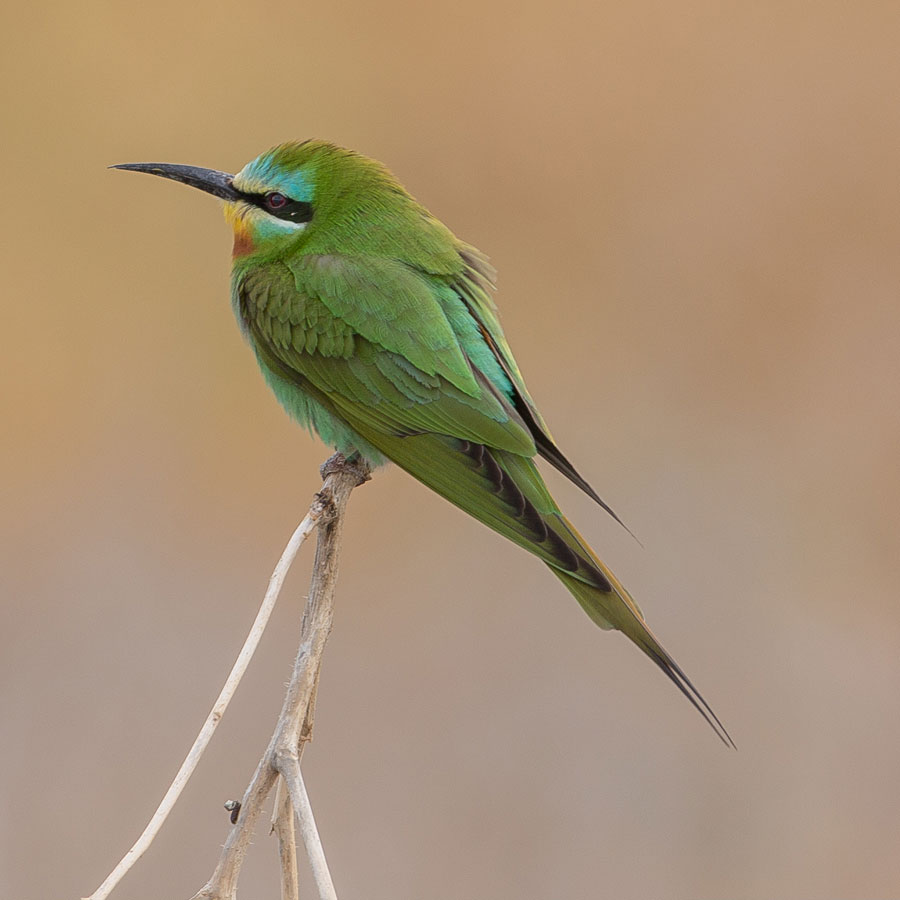
A Blue-cheeked bee-eater visits the island.
The island also serves as a vital stopover for visiting migratory birds, such as the Socotra Cormorant, Blue-cheeked bee-eater, Barn Swallow, and Crested Lark.
These migratory birds find an ideal resting and feeding ground in the island’s sabkhas and marshes before continuing their intercontinental journeys. Surveys indicate that the island is a key site on bird migration routes, thanks to its tranquil environment and rich biodiversity.
These migratory birds find an ideal resting and feeding ground in the island’s sabkhas and marshes before continuing their intercontinental journeys. Surveys indicate that the island is a key site on bird migration routes, thanks to its tranquil environment and rich biodiversity.
Island flora
The nature reserve hosts diverse plant species thanks to its varied habitats formed where coastal environments transition to sabkha-dominated landscapes, meaning the island supports a wide range of vegetation superbly-adapted to different soil types and salinity levels.Its coastal sand dunes feature plants like Plantago and Halopyrum mucronatum, which forms a delicate green carpet. And the wet salt flats, shaped by tidal movements, are home to resilient species such as Halocnemum strobilaceum, Suaeda aegyptiaca, and Salicornia europaea, which play a key role in soil stabilization and erosion resistance.
Faunal diversity
Environmental surveys of the island reveal a rich diversity of wildlife. Using methods such as direct visual inspection, tracking footprints, camera traps, and night surveys with flashlights, researchers have previously documented mammals such as the Arabian Red Fox, Jerboa, Arabian Hare, and Golden Jackal, living alongside reptiles including the Desert Monitor and the Arabian Desert Gecko.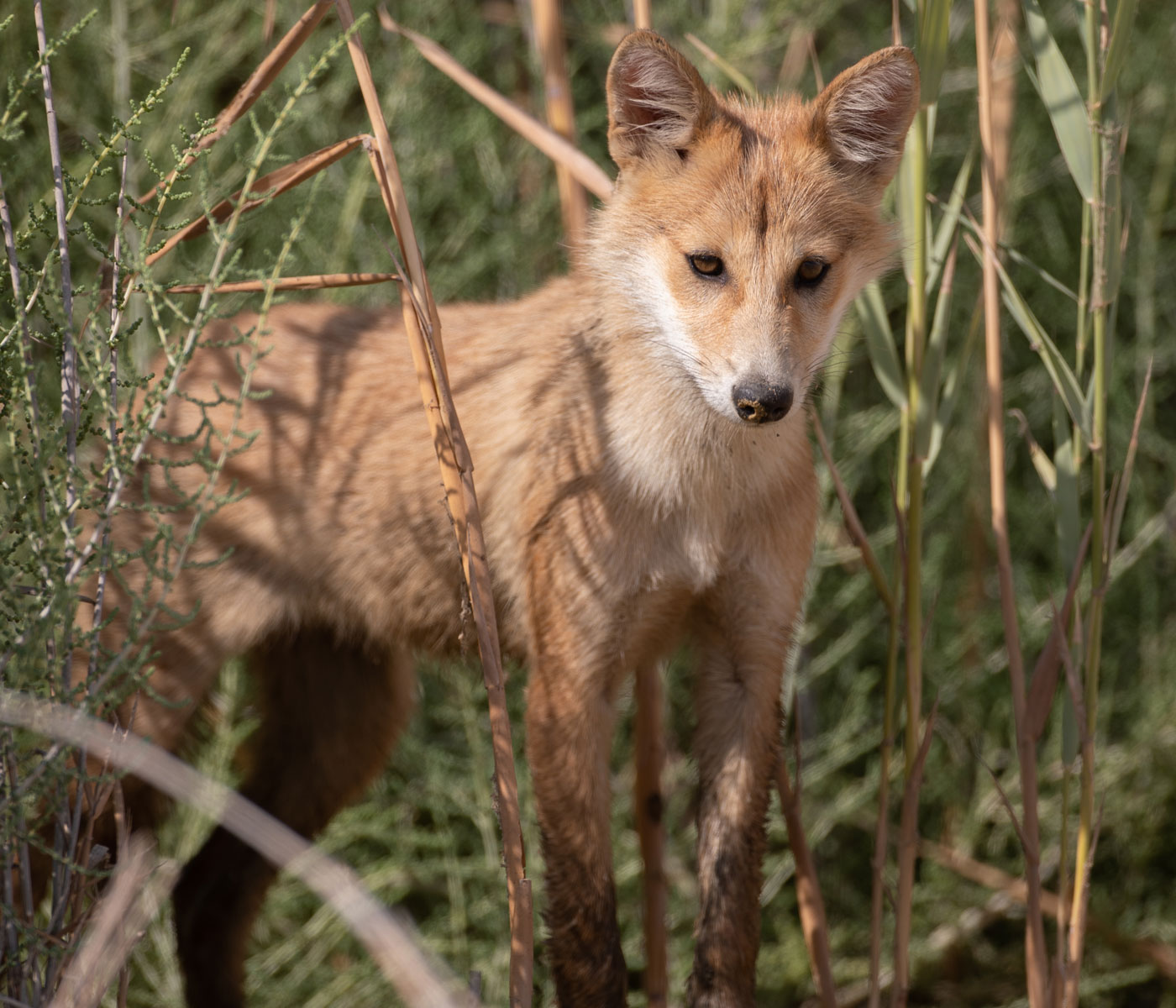
A juvenile Arabian golden jackal.
These species thrive in the island’s sandy and sabkha environments, benefiting from the wide-range of vegetation and natural shelters.
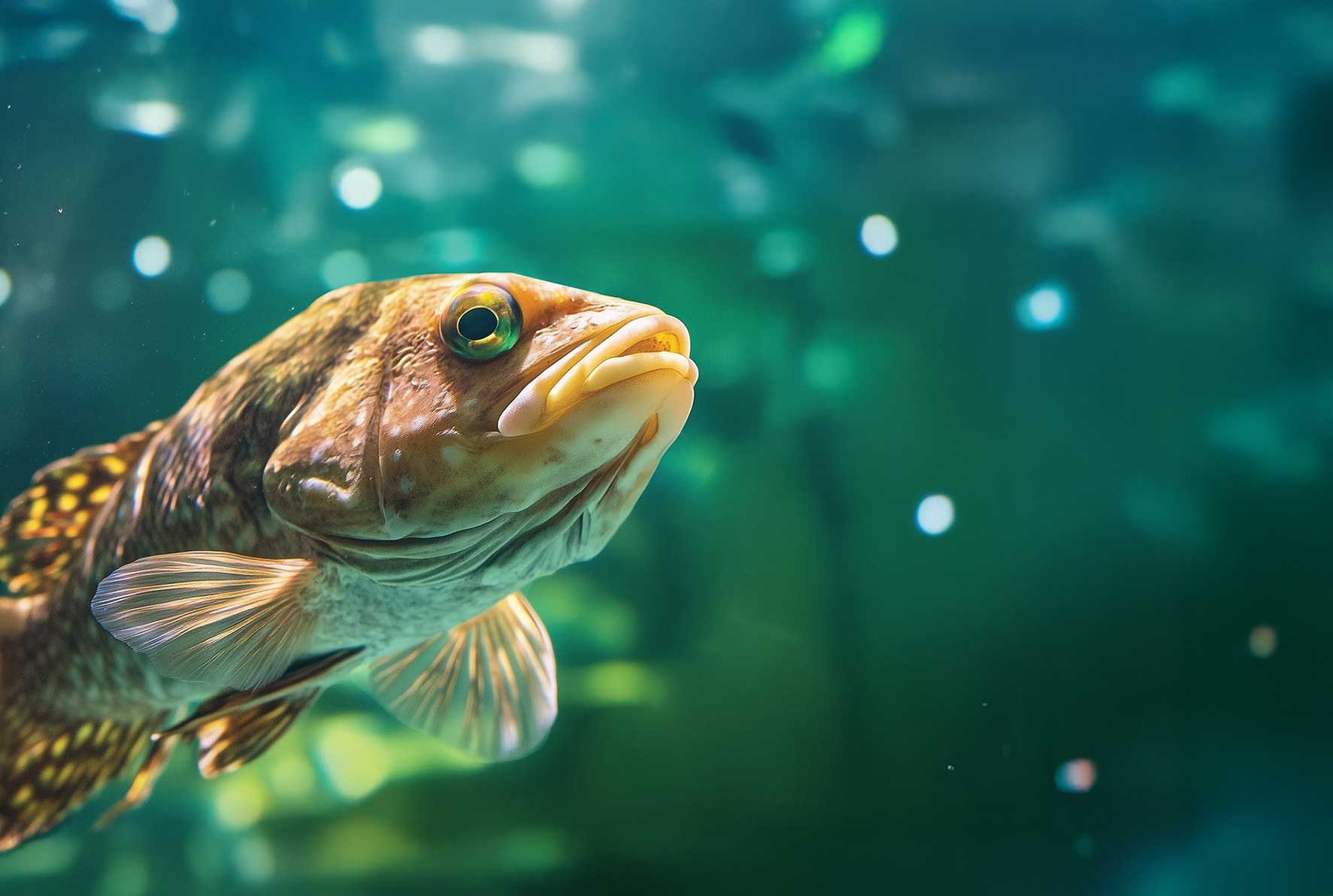
The Regional Center for Sustainable Development of Fisheries
Discover the new fish hatchery and aquaculture center on Abu Ali island.